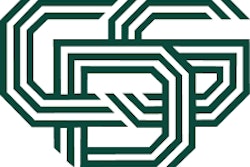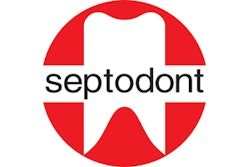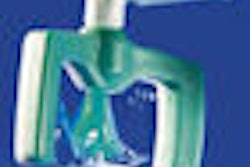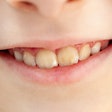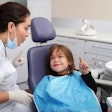
With more than 1,800 exhibitors from 57 countries, it is not surprising that the International Dental Show (IDS) in Cologne, Germany, last month served as the launching pad for dozens of new and innovative dental products. The big players tend to garner much of the attention, but a number of interesting new products were introduced by smaller vendors from around the globe.
While some of the novelties presented at IDS are not (yet) ready for the U.S. market, they are likely to be of interest to those dentists with a global view who are wondering what the next new thing in dentistry might be.
|
IDS 2009: A truly global event More than 1,800 exhibitors from 57 countries filled the exhibit halls with their wares at IDS 2009. Most of the 189 U.S. companies used the Dental Trade Alliance USA Pavilion for their presentations. They only just outnumbered the 183 Italian exhibitors, an indication of Italy's strength in the dental market. Of the 103 Chinese companies, 24 were from Taiwan. Together the Asian companies accounted for 227 exhibitors, clearly dominated by China and South Korea. Not surprisingly, the largest group represented was Germany, with 613 companies present. |
DMG
Although there is no such term, "approxivention" may describe the solution to a problem that makes most dentists cringe with frustration. Incipient interproximal caries presents the practitioner with the dilemma of either the uncertainty of fluoridation success or having to sacrifice large amounts of healthy hard tissue. DMG had an overwhelming response at IDS 2009 to its new Icon Caries Infiltrant for the microinvasive treatment of such lesions in the approximal and vestibular regions.
The patented approximal tips provide easy and fast access to the site to be treated -- without drilling. The vestibular caries infiltration is particularly well-suited for orthodontic patients after braces have been removed. Icon-Etch, a gel containing hydrochloric acid, pyrogenic silicic 2 acid, and surface-active substances, is used on the diseased enamel followed by Icon-Dry: 99% ethanol 3. Using a special approximal tip on the Icon-Infiltrant syringe, the application foil is placed similar to a matrix band. Icon-Infiltrant, a methacrylate-based resin matrix with initiators and additives, is applied, infiltrates the lesion, then is light cured. Demand for this product is exceeding production capacities, the company said -- to the point that introduction into some markets has had to be postponed. Drilling? No, thanks!
Septodont
Articaine hydrochloride has been widely and safely used in Europe for decades, and it appears to be being embraced by more dentists in the U.S. Septocaine with epinephrine is now available only at 1.7 mL each from Septodont U.S.A. At IDS 2009, the company introduced a 1-mL carpule for shorter-lasting numbness without waste in a quantity ideal for treating children. In addition, the smaller carpule is ideally suited to the Septodont Petite syringe designed for dentists with smaller hands. Its compact design provides a smaller thumb ring and finger grip and shorter plunger length for better control and added comfort when aspirating. With Petite already in the U.S. market, the 1-mL cartridge will probably follow before long.
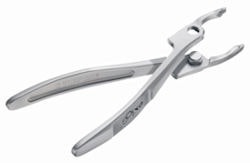 |
| The Zepf exLOG forceps by Helmut Zepf Medizintechnik. All images courtesy of Dr. Carlheinz Swaczyna. |
Helmut Zepf Medizintechnik
A new generation of demountable extracting forceps in the patented Zepf exLOG Design (U.S. Patent 7,318,724, issued in April 2008) was presented by Helmut Zepf Medizintechnik. The company composed a program of 11 extracting forceps figures out of more than 400 existing figures, chosen according to anatomy, ergonomics, and hygiene. The handles allow equal power transmission for left- and right-handed surgeons alike. Because of the smooth handles and the demountability, exLOG forceps can be easily cleaned. For automatic conditioning in a wash tray, the demountability is a great bonus, and less space is needed. The matte surface exLOGs are milled out of one piece using five-axis computer numerical control (CNC) milling for ultrahigh precision, making this product very light compared with traditional forged forceps. It is not yet available in the U.S.
SycoTec
SycoTec, an independent spin-off of KaVo, presented its new SycoSLM micromotor at IDS 2009. The SycoSLM is an average of 50% shorter and 30% lighter than other electric dental motors and, when combined with a contra-angle handpiece, ensures balanced weight distribution and improved handling. It weighs just 67 grams and is 31.7 mm long, making it the shortest, smallest, and lightest micromotor on the market, according to the company. An integrated LED light with a significantly longer service life compared to previous high-pressure lamps provides improved lighting during treatment.
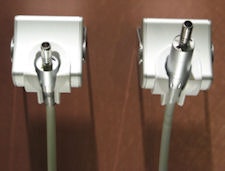 |
| The SycoSLM micromotor by SycoTec. |
The SycoSLM is designed for integrated delivery of spray air, spray water, and cooling air for the motor, and it incorporates a recirculation stop for spray water to prevent back-contamination. The motor's rotational speed range lies between 1,000 and 40,000 rpm, with a torque of 3 Ncm. Whether using the straight or contra-angle handpieces, SycoSLM operates quietly and free of vibrations. The instrument coupling corresponds to the ISO standard and is suitable for all straight and contra-angle handpieces. As an OEM manufacturer, SycoTec provides the micromotor together with a hose and motor electronics. The company also produces handpieces for various suppliers in the U.S., many of which were present at the Chicago Dental Society MidWinter Meeting in February.
W&H
The main focus at the W&H booth was the new Alegra contra-angle handpieces with sterilizable LED and generator. The fact that these handpieces generate their light independently of the drive unit made the latest W&H product development the most popular of the LED instruments at IDS 2009. It was closely followed by the Synea LED turbines, the surgical instruments with LED and generator that can now be dismantled as well as Pyon 2, the piezo scaler with a sterilizable five-output LED ring on the handpiece. There was also great interest in Prozone, the new W&H ozone generator. The Alegra will be available in the U.S. later this year.
Mirrodent and Mirrovac
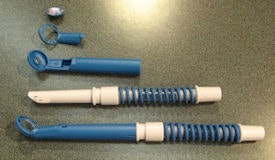 |
| The Rotomir by Mirrodent. |
Also from Sweden, Mirrovac is a different approach to the same problem said to work without moving parts. Swedish dentist Kent Nyman, who invented Mirrovac, presented the product at IDS 2009.
Apexum
Endodontic procedures are time-consuming, and periapical lesions always bear the chance of failure. Apicectomies carry risks depending on the anatomical site and the surgeon's experience and routine. A simple solution to this difficult problem was presented at IDS 2009 by Israeli start-up Apexum. Apexum has developed a set of miniature curettage tools, supplied in a treatment kit that contains the Apexum Coarse-Ablator, the Apexum Fine-Ablator, and two irrigation needles.
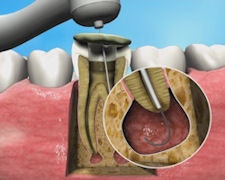 |
| Apexum's treatment kit contains miniature curettage tools, including the Apexum Coarse-Ablator, the Apexum Fine-Ablator, and two irrigation needles. |
Two so-called ablators operated by a conventional dental contra-angle handpiece are introduced through the root canal. One is a precurved blade, and the other a braided NiTi strand. Being extremely elastic, both are able to distinguish between the soft tissue of the lesion and the bony wall of its crypt. The soft tissue is first ground, then minced to a thin suspension with the instruments being deflected from the bony walls, keeping them intact. The thin tissue suspension is then washed out through the root canal using a saline solution, thus eliminating open-flap surgery of the periapical lesion.
A complementary measure following root canal treatment in all teeth with periapical lesions, this approach is said to promote faster healing. It does not require surgical skills and can easily be adopted and applied by endodontists and general practitioners alike. Pain, discomfort, and swelling associated with open surgical procedures are avoided, and the cost of the procedure will be minimal, according to Apexum. FDA clearance is expected next month, according to company officials.
Cox Medical
Cox Medical presented its new Denpress dental impression dispenser system at the show. Denpress comprises a fully autoclavable dispenser with changeable breeches and plungers to allow use of all cartridge ratios (both old and new style) in one gun. Simply change the plunger rack and patented holder. The result is one dispenser for all ratios of 50-mL cartridges, at a low cost. The 13:1 trigger ratio facilitates dispensing of high-viscosity materials. The kit contains the gun, three cartridge holders, and three plunger racks for a variety of cartridges. One dentist, one gun -- very sensible!
Dr. Hinz Dental
A new pressure-molding sandwich procedure was presented by Dr. Hinz Dental at IDS 2009. Intraoral snoring therapy and orthodontic appliances, relief splints, and temporary partial dentures with nearly invisible clasps can be made using this method. Fixtures are laminated between the layers, and the appliances are thin but stable and flexible with a high-quality surface that requires no polishing.
Carlheinz Swaczyna was a general dentist in Krefeld, Germany, for 30 years before retiring in 2007. He writes regularly for the weekly German dental publication DZW - Die Zahnarztwoche.
Copyright © 2009 DrBicuspid.com




